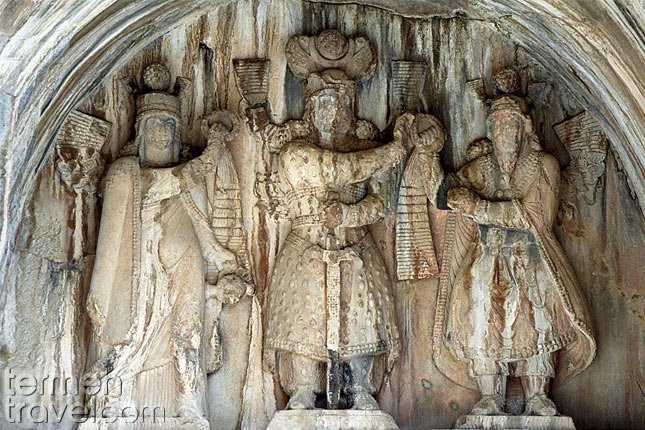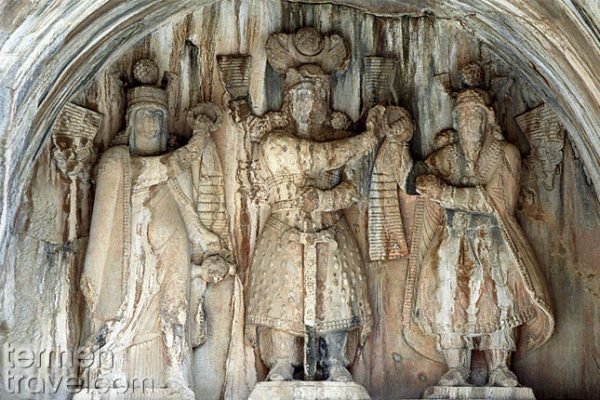Thousands of years ago, when mother nature intertwined with humankind’s lifestyle to provoke inspirations in order to discover the reasons for natural phenomena, one of the oldest civilizations on earth called Elam was created. Chogha Zanbil is the standing proof of human beings’ rich and ancient history when the world was still free from the issues of modernism. This magnificent structure shows us the early forms of religions and how it progressed until today.
Table of Contents
What is Chogha Zanbil?
According to Habib-Ullah Pour Abdollah, who is a great Persian architect, Chogha Zanbil is considered the first religious building in Iran. About 1250 BC, the king of Susa called Untash-Napirisha decided to build a temple to honor and worship the Elam god called Inshushinak. By building temples, people could show their respect to their gods and ask for his mercy. This structure was buried under the dust when the Elam civilization got destroyed by Assyrians. However, during the Pahlavi Dynasty, when Iranians were excavating for oil, Jacques de Morgan, who was a French mining engineer, found this place, and a French archaeologist called Roman Ghirshman excavated the remains of the Chogha Zanbil.
The meaning of Chogha Zanbil
In his articles, Roman Ghirshman calls Chogha Zanbil the “Ziggurat Dur Untash,” which is the Assyrian name for this structure. “Ziggurat” means the peak or a high place, which refers to all Assyrian religious structures, and “Dur Untash” means the town of Untash(the king of Elam).
However, today Iranians and the popular historical journals all around the world call this place, Chogha Zanbil, which means “basket mound.” This name comes from the fact that the remains of Chogha Zanbil before being excavated, looked like an upside-down basket.
What Is the Elamite Culture?
Elam was an ancient pre-Iranian civilization in Persia, which was strongly inspired by nature and its elements. This Mesopotamian polytheism was one of the significant religions in the world. In Elamite Culture, animals, especially serpents, were considered holy, and people worshipped different gods and goddesses. Women were also significant and respected in this culture. There is some evidence in discovered antiques that shows how Elam was a matriarchal society in which women had the most power.
The Main Gods and Goddesses in Elamite Culture
The Elamite gods and goddesses can be compared to Greek divinities; however, the Elamite gods and goddesses had protector roles.
Kiririsha is the great goddess and the divine mother. She was the ultimate power of Elam, and she had the power of cursing others. She is associated with the sea and fishing, which is an important aspect of being in Susa.
However, when the patriarchal society was showing its signs in Iran, Humban, who is a supreme god, became stronger for people. He is the god of earth and tries to make the earth pure of enemies.
Narunte is another goddess who was worshiped in Susa as well. In other words, she is the representative of Susa with the leaf of the palm tree in her hand and a goblet in another one. Since there was a tight relationship between Elam and Assyrian culture, there are two lions beneath Narunte feet, which are the symbol of Ishtar, the goddess of beauty in Assyria.
Like Hades in Greek, Jabru is the god of the underworld in Elamite culture. He is also the father of all gods and goddesses.
Finally, Inshushinak is the significant god of strength and the protector of Elam. He is shown with the lion as well, but in this case, archeologists believe that these lions are the symbol of power. Chogha Zanbil is located in the capital of Elam Civilization for people to pray and honor him.
What Does Chogha Zanbil Look like?
By looking at Chogha Zanbil, the first phrase that comes to mind is being familiar and exceptional at the same time. When you look at the structure, you can find similarities between this place and El Castillo, but the differences are a lot.
This mud-bricked square-shaped temple originally had five floors with 52 meters height surrounded by high walls. However, today only 2 of them exist. Since Chogha Zanbil is so tall, people believed that this place ascends to heaven at night.
Although Chogha Zanbil has a square shape, the pyramid form of it represents moving up toward the gods, and that is why the core building of this structure is dedicated to the god. There are some inscriptions written on the walls of Chogha Zanbil in Elamite Language, which describes the greatness of Inshushinak and the holiness of this place.
Because of the same architectural elements that can be seen in Chogha Zanbil and its value in mankind’s history, UNESCO inscribed this place as the first Persian site in its World Heritage List in 1979.
How to reach Chogha Zanbil?
Chogha Zanbil is located in Susa, in Khuzestan Province, near the Persian Gulf. By traveling toward the east of Susa City, you will arrive at Chogha Zanbil after 40 kilometers. Although reaching this place from Shushtar is easier since it is 5 kilometers closer to Shushtar. However, due to the geographical divisions, the ancient Chogha Zanbil is a part of Susa.
What Is the Best Time to Visit Chogha Zanbil?
Since this historical building is located in Khuzestan, which has one of the highest temperatures between different provinces of Iran, the best time to visit Chogha Zanbil is during fall, in late February or early in March. The nice weather of February and March allows you to see newborn wildflowers and grass around Chogha Zanbil.
Chogha Zanbil is where history shows its power and importance once again to human beings and lets us explore the mysteries of our existence. By traveling to Iran and visiting this place, you get to see one of the most amazing historical sites and get familiar with Persian culture more.
Works Cited:
Mohammadi, Mohammad Hadi. Sepidehdam-e Andisheh, 2006














Hello dear
Thanks for the great information about the ancient world of our own ancestors and their ways of living.
I’m from kuhgeluye va boir ahmad living in dehdasht it’s a town located 45 mins away from BehBahan in khouzestan.
We have lots of Elamite ancient treasures and found and unknown places over here too.
Thanks 👌🙂
Thank you for your comment
Hi Ramin Didar
thanks for your informative comment “We have lots of Elamite ancient treasures and found and unknown places over here too” (in Khouzestan ?)
Should you come across material about the language they spoke and any information about DNA test done on the bone remains to find out the race which they belong to. I would be interested to know for academic purpose, based on Spiritual inspiration.
I understand that the language the “Elamites” spoke is related to the “Dravidian” languages which includes “Baruhi spoken in stretches from Iran upto Baluchistan and beyond. Coincidentally the language I speak “Tamil” is one of the most advanced “Dravidian” language in India. (Millions of people in India Speak the Dravidian language in various formats of which Malayalam, Telugu and Kannada are major languages next to Tamil.
Looking forward to hear from you
warm regards
George Devadoss
India